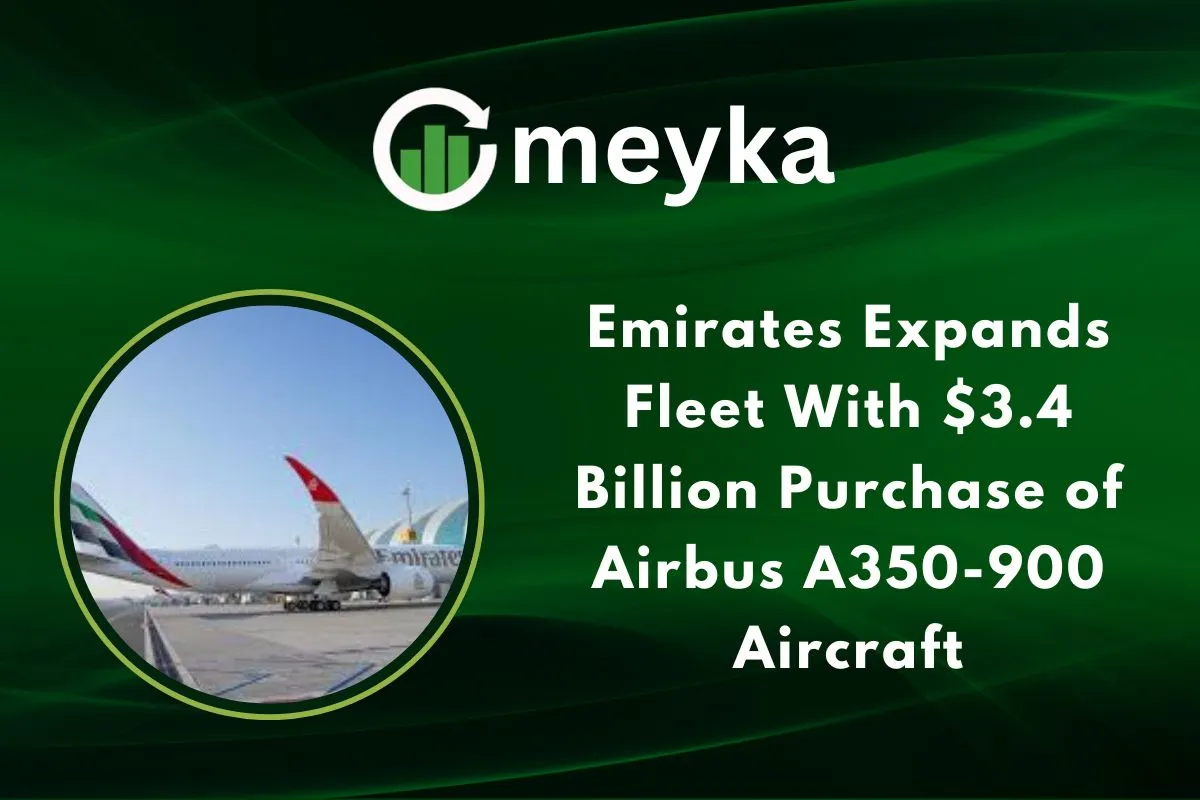Emirates Expands Fleet With $3.4 Billion Purchase of Airbus A350-900 Aircraft
We’re seeing a bold step from Emirates: the airline has announced a $3.4 billion commitment to the Airbus A350‑900. This isn’t just about adding planes; it’s about setting up for growth, efficiency, and a modern flying experience. The A350‑900 is not new, but for Emirates, it represents a major push into next-generation wide-body aircraft. In this article, we’ll dig into why Emirates made this move, what the A350‑900 brings, and how it could reshape both the airline’s future and the wider aviation industry.
What is the Airbus A350‑900?
The Airbus A350‑900 is a long-haul, twin-aisle aircraft designed for both efficiency and comfort. Built with lightweight materials and powered by modern engines, it offers a 25% fuel-burn advantage and lower CO₂ emissions compared to older jets. Its “Airspace” cabin is quieter than many older wide-body aircraft, Airbus says its noise footprint is reduced by up to 50%. Importantly, the A350‑900 can operate with up to 50% Sustainable Aviation Fuel (SAF), and Airbus is targeting full SAF capability by 2030.
Details of Emirates’ $3.4 Billion Deal
At the 2025 Dubai Airshow, Emirates publicly confirmed a deal to acquire eight Airbus A350‑900s, with a reported value of $3.4 billion. That order brings to light a long-term strategy: Emirates already has a total order of 65 A350‑900s, consisting of earlier announcements plus this newer tranche. Emirates expects to receive more of these aircraft in the coming years as part of a phased fleet expansion.
Why Emirates Chose the A350‑900
So, why this jet? First, the A350‑900 is fuel-efficient and cost-effective. Its modern design reduces operating costs, which makes it appealing for long-haul flights. Second, the aircraft is very flexible. Emirates plans to use the A350‑900 on both medium‑ and long-haul routes, which lets them tap new markets without over‑committing. Third, there’s an environmental edge. With the A350’s SAF capability and lower emissions per seat, Emirates is aligning with more sustainable aviation trends.
How This Affects Emirates’ Global Network
We will likely see the new A350‑900s deployed on a variety of routes. Emirates has already announced seven new destinations for summer 2025 that will use the A350: Tunis, Amman, Istanbul, Dammam, Ho Chi Minh City, Baghdad, and Oslo. These aircraft carry 312 passengers in three classes: 32 in Business, 21 in Premium Economy, and 259 in Economy. By spreading these jets across different geographies, Emirates is improving its reach and giving more travelers the chance to try its next-generation cabin experience.
Impact on Airbus and the Aviation Industry
This deal is also a big win for Airbus. As Emirates confirms its order, it strengthens Airbus’s position in the market against its competitors, especially Boeing. For Airbus, the A350‑900 remains a key product: it’s already popular, and this renewed commitment from a major carrier shows confidence in its design. On the broader industry level, this purchase signals growing demand for fuel-efficient wide-bodies and underscores airlines’ push toward more sustainable flying.
Economic Implications
Economically, this expansion is very meaningful. Emirates’ investment $3.4 billion in new aircraft boosts the UAE aviation sector, supports jobs, and strengthens the airline’s role in global trade and tourism. Also, with better connectivity via these A350s, Dubai’s position as a global hub gets stronger. That helps not just Emirates, but the whole region’s travel and commerce. On the financial side, modern aircraft like the A350‑900 help reduce cost per seat and improve long-term profitability for Emirates.
Challenges and Future Outlook
Of course, there are challenges. The delivery of wide-body aircraft often depends on global supply chains and production capacity. Emirates has faced past delays; for example, its first A350 deliveries were postponed. But Emirates seems committed. The airline is planning ahead, not just for numbers, but for efficient growth and sustainability. Looking forward, we may see more A350‑900s, or even other Airbus models, as part of Emirates’ ongoing modernization strategy.
Conclusion
In short, Emirates’ $3.4 billion investment in Airbus A350‑900 jets is more than a fleet update; it’s a vision for the future. These modern planes give Emirates fuel savings, route flexibility, and a fresh passenger experience. They also reinforce Airbus’s strength and point to a greener, more efficient aviation future. As we watch delivery roll out and new destinations open, it’s clear this move could reshape how Emirates grows, and how the skies evolve.
FAQS
Yes, Emirates already has 65 Airbus A350‑900 jets on order.
In 2025, Emirates will launch its first A350‑900 into service.
They ordered it because the A350‑900 is very fuel‑efficient, modern, and lets them fly to more places with lower costs.
Disclaimer:
The content shared by Meyka AI PTY LTD is solely for research and informational purposes. Meyka is not a financial advisory service, and the information provided should not be considered investment or trading advice.






